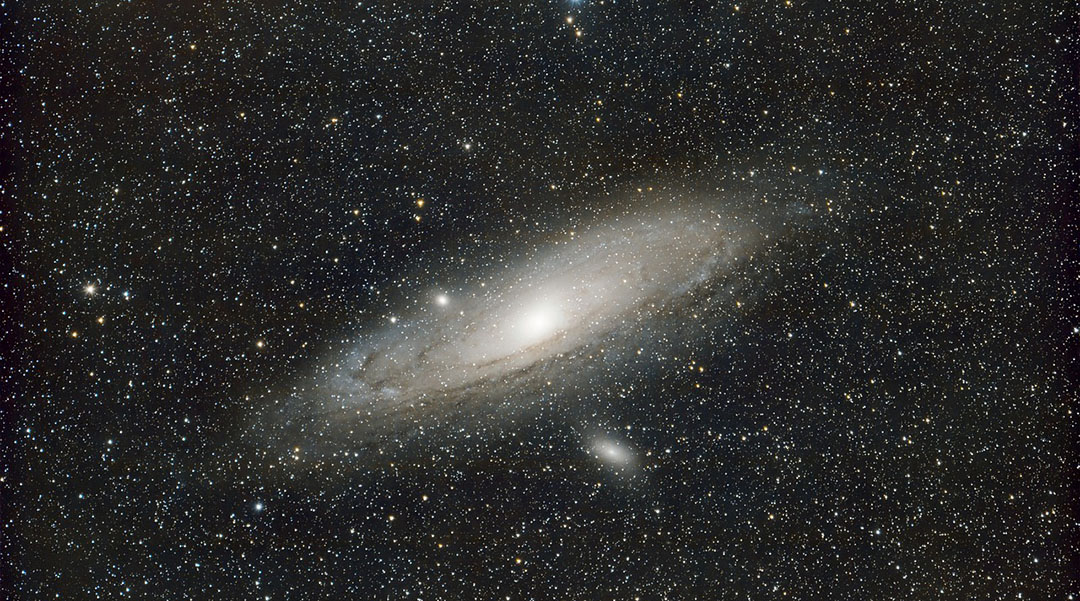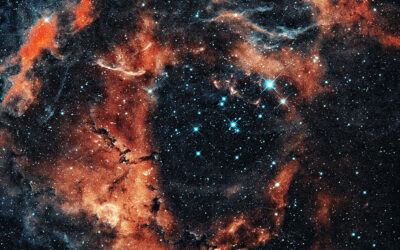Scientists believe they may finally have an answer for how super massive black holes, which exist in the hearts of most galaxies and galaxy clusters, grow to such immense sizes.
New compelling observational evidence, in which they combined visible light and X-ray observations of seven galaxy clusters, has uncovered the intricate structure of thin, elongated gas formations known as filaments that stretch tens of thousands of light-years outward into the reaches of space.
The team believes these filaments could be channeling interstellar material into the galaxies’ supermassive black holes, even more efficiently than their well-studied accretion disks, which are rotating structures of gas and dust that typically surround these cosmic giants.
Perhaps more excitingly, these observations align with predictions made by chaotic cold accretion theory.
Understanding how supermassive black holes grow
Supermassive black holes play a crucial role in shaping the evolution of galaxies and galaxy clusters. Despite their immense influence, the processes driving their own growth to billions of solar masses remain a subject of intense research and debate.
A key challenge in understanding their formation lies in explaining their rapid growth. These black holes exert immense gravitational forces that draw in surrounding matter, forming rotating disks of gas and dust called accretion disks. However, these disks often appear insufficient to supply enough material to sustain the rapid accumulation needed for such massive growth.
Observations have detected supermassive black holes present in the universe just a few hundred million years after the Big Bang, raising questions about how these cosmic giants formed and reached such extraordinary sizes so quickly–quick for cosmic time scales that is.
One prominent hypothesis for their growth suggests that supermassive black holes are fed by dense filaments of gas formed through a process known as chaotic cold accretion. According to this model, the hot gas that permeates galaxy clusters, known as the intracluster medium, cools unevenly because small variations in density and pressure cause some regions to radiate energy more efficiently than others. These differences allow certain areas to lose heat faster, becoming cooler and denser than their surroundings.
As cooling progresses, denser regions of gas condense into cooler pockets that collapse under their own gravity. This process results in the formation of multiphase, elongated, thread-like filaments, with gas phases ranging from icy cold molecular gas to plasmas reaching tens of millions of degrees. These filaments weave through the surrounding gaseous environment like a tangled web.
Unlike accretion disks, these filaments provide a more direct and efficient pathway for feeding the black hole. Instead of spiraling inward over extended periods of time, the material within the filaments funneled in rapidly and could explain how supermassive black holes grow so quickly, even in environments dominated by hot gas, which usually resists collapse due to its high pressure.
Testing the theory by observing cooling flow clusters
To test this model, the researchers focused on seven well-known galaxy clusters, including Perseus, Centaurus, and Hydra-A. These clusters are known to host supermassive black holes at their centers and exhibit filaments in the vicinity of these monstrous celestial bodies.
Since all gas phases — each emitting radiation at different wavelengths, such as X-rays and visible light — are confined within the same filaments, the radiation across all wavelengths should originate from the same regions, specifically along these filaments. This arrangement ensures that the relative power of different types of radiation remains constant along the filaments, as the emission is governed by internal processes rather than external factors, like their distance from the black hole. If the radiation’s relative power depended on the proximity to the black hole, it would vary along the filaments, with sections farther away emitting differently from those closer to it.
Using the MUSE instrument on the European Space Organization’s Very Large Telescope in Chile and the SITELLE spectrometer on the Canada-France-Hawaii Telescope, the team captured detailed optical images of the filaments. For X-ray data, they relied on the space-based Chandra X-ray Observatory, which provided high-resolution images of the hot gas in the intracluster medium.
“We present a quantitative comparison of [visible light] and X-ray brightness in the filaments observed in multiple […] clusters,” the team explained in their paper. “These clusters were uniformly analyzed with a novel technique that allows the measurement of X-ray filament surface brightness over a large dynamic range.”
The observations revealed a near-constant ratio between the X-ray and optical brightness of the filaments across all clusters studied. This consistency supports the idea that the filamentary gas phases are excited by local processes, such as interactions with energetic particles, shock caused by supernovae explosions within the galaxies, and turbulent mixing layers.
“The almost constant X-ray/[optical] surface brightness ratio […] along the different filaments of the entire sample indicates that a local process must be responsible for the excitation of the gas,” the researchers wrote.
This finding aligns well with the chaotic cold accretion model, which predicts that the emission from the filaments should arise largely from processes internal to the gas itself.
Further observations needed for definitive answers
While the study provides strong evidence for the chaotic cold accretion model, it leaves some questions unanswered.
The team analyzed only two of the three predicted gas phases within the filaments — the hot (X-ray emitting) and warm (optical emitting) phases. The coldest phase, consisting of molecular gas below 100 Kelvin, remains difficult to study due to limitations in current observational technology.
“In addition to the [optical range] and X-ray correlation discussed in this paper, it is currently unknown whether there is any correlation with the cold (<100 K) gas phase, which carries the bulk of the mass of the filaments,” the researchers noted. “We leave the correlation with the cold molecular gas properties using ALMA (Atacama Large Millimeter Array) observations for a future study.”
Future observations with advanced instruments, like ALMA, could provide a more complete picture of the multiphase nature of these filaments, shedding further light on how supermassive black holes grow.
Reference: Valeria Olivares et al, An Hα–X-ray surface-brightness correlation for filaments in cooling-flow clusters, Nature Astronomy (2025). DOI: 10.1038/s41550-024-02473-8
Feature image credit: mattiaverga on Pixabay

















